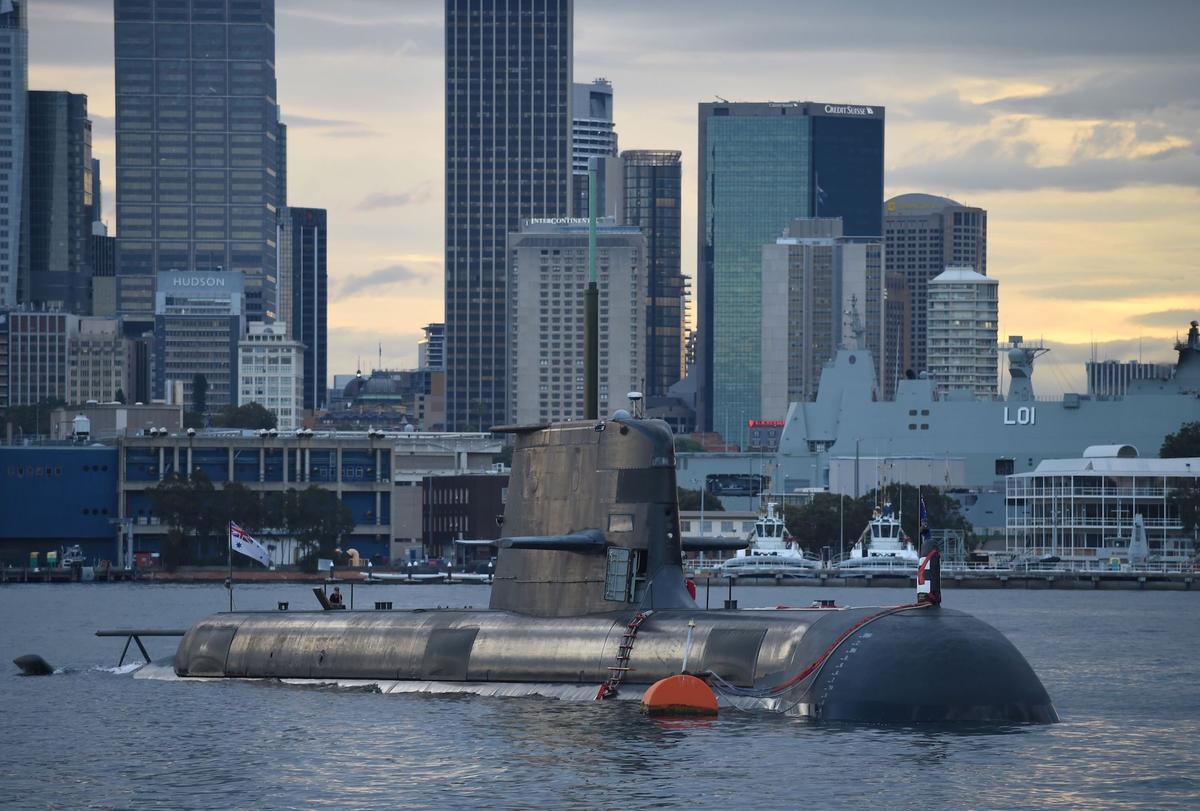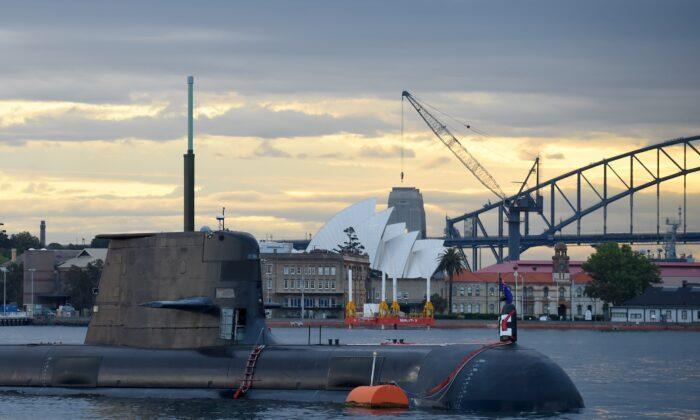The submarines are being designed and constructed by France’s Naval Group at the Osborne Shipyard on the Lefevre Peninsula in South Australia.
The Commonwealth and Naval Group, chosen to build Australia’s future submarines, appeared to be at loggerheads over the “Strategic Partnering Agreement,” a key agreement which was signed by Defence and Naval Group on Feb. 11, 2019, and would provide a framework for the complex and costly project.
The agreement included a provision for Australia to break the contract if the subs were delayed or failed to deliver promised capability.
According to the ANAO report, The Naval Shipbuilding Advisory Board warned that Defence should “consider alternatives to the current plan in the context of determining if there was a ‘best alternative to a negotiated agreement’ (BATNA) in the event contract negotiations were not successful.”
Defence began examining whether it could extend the service life of the existing Collins-class submarines and “the time this would allow to develop a new acquisition strategy for the Future Submarine if necessary.”
Concerns grew so much that the Naval Shipbuilding Advisory Board commented that Defense should assess “whether program risks outweighed the benefits of proceeding” and consider if “proceeding is in the national interest.”
The ANAO report confirmed that the program is running nine months behind deadline and that the “Defence cannot demonstrate that its expenditure of $396m has been fully effective” in achieving key milestones.
“The program is currently experiencing a nine-month delay in the design phase against Defence’s pre-design contract estimates, and two major contracted milestones were extended,” the report read.
“As a result, Defence cannot demonstrate that its expenditure of $396 million on design of the Future Submarine has been fully effective in achieving the program’s two major design milestones to date. Defence expenditure on design represents some 47 percent of all program expenditure to 30 September 2019.”
The design and construction of the Future Submarine fleet represent the largest Defence procurement in Australia’s history, which the ANAO described as a “megaproject by all international standards and the most challenging acquisition program it has undertaken.”
According to the report, the acquisition was placed at a higher risk due to the military’s decision not to acquire a military‐off‐the-shelf submarine platform, and instead engage a ‘strategic partner’ to design and deliver the submarines with significant Australian industry input.
The report also revealed that Defence had “identified that the fabrication of complex hull parts, requiring skilled personnel and sophisticated machinery, presented a risk to the program” and have therefore approved the fabrication of the parts for the first future submarine to be undertaken in France, rather than Australia, in an effort to avoid delays.
However, fabrication for the remaining 11 submarine hulls is to be undertaken in Australia.
The Department of Defence added that it is in the process of acquiring 12 new submarines to replace the six Collins-class submarines currently operated by the Royal Australian Navy.

Despite the persistent problems, Minister for Defence Linda Reynolds said there has been no change to the delivery timeframe of 2032.
“I welcome the important ANAO [Australian National Audit Office] findings that the Federal Government has established a fit-for-purpose strategic partnering agreement with Naval Group, and that there are appropriate risk management strategies in place to deliver the Future Submarine Program,” Senator Reynolds said in a statement.
“The first Attack Class submarine is scheduled for delivery to the Royal Australian Navy in 2032. The ANAO report confirmed there has been no change to this delivery timeframe or budget.
“The program is highly complex and requires a long-term focus. Whilst the Future Submarine Program is still in the early design phase and there have been some delays, it is essential to get the design right,” she added.





